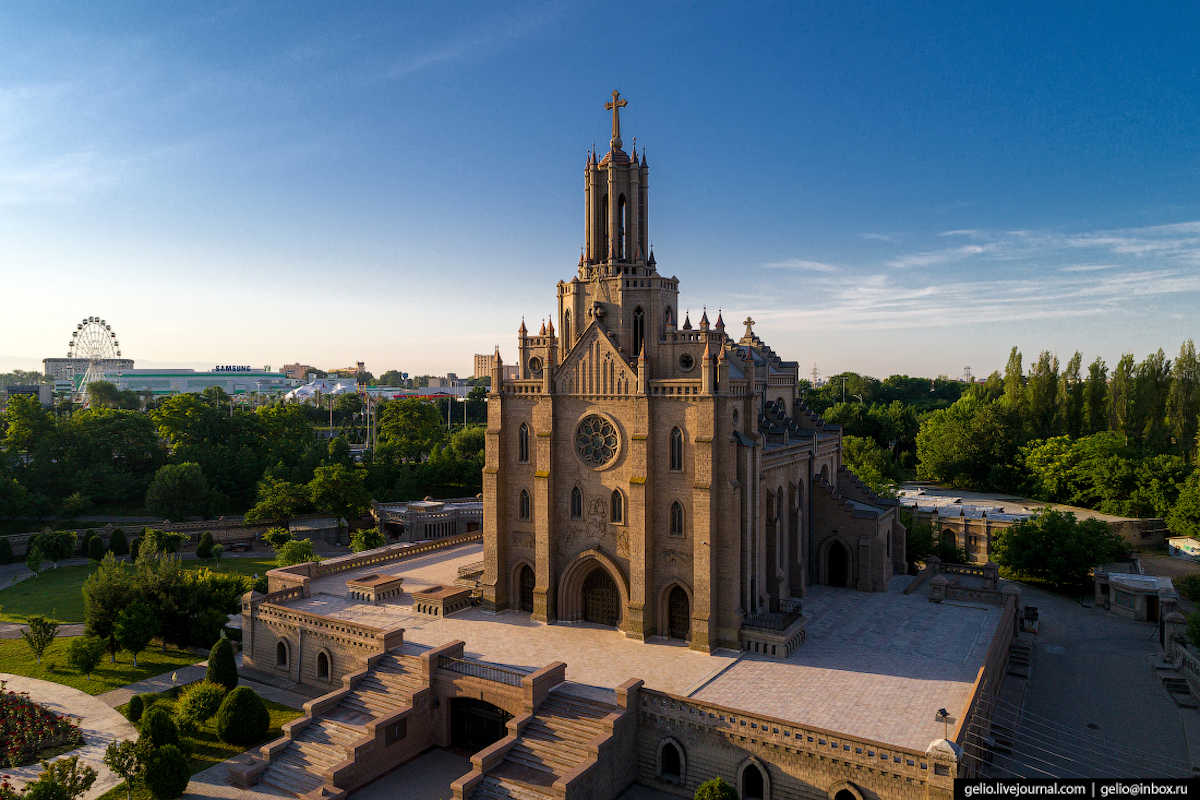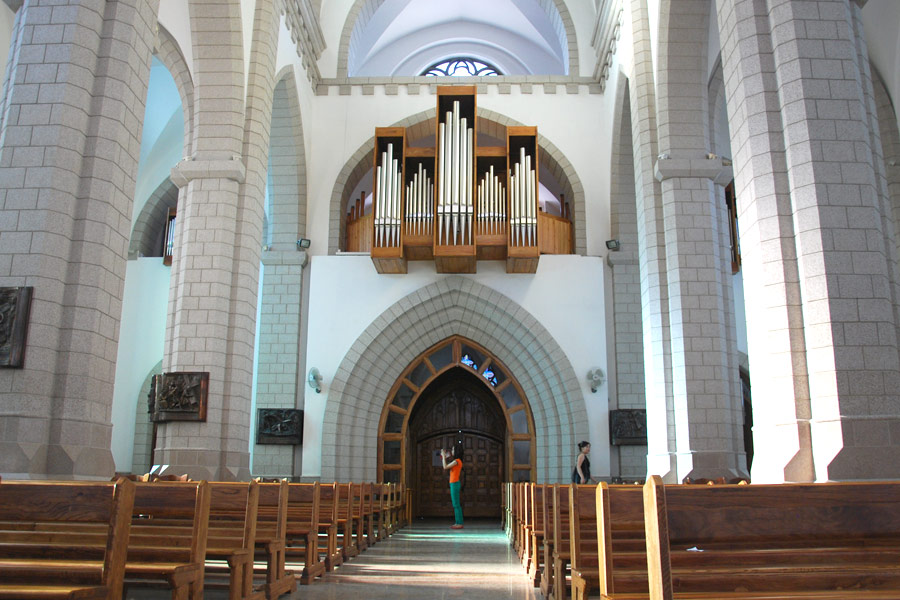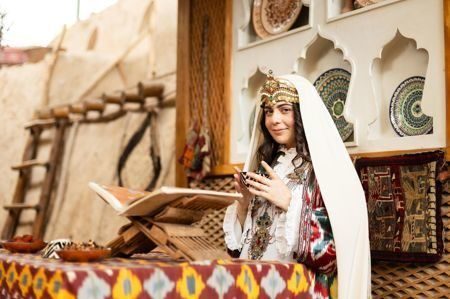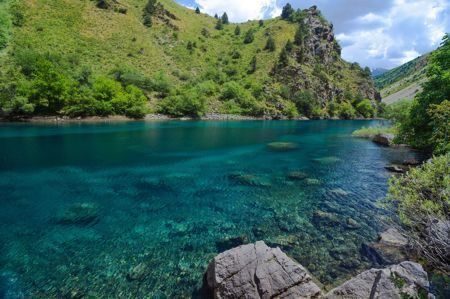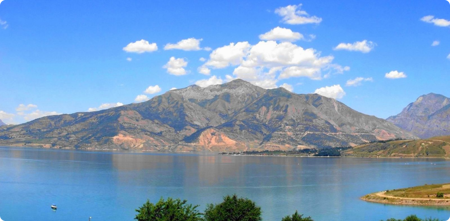The construction of a Catholic church in Tashkent began in 1912 on the initiative of priest Justin Bonaventura Pranaitis and designed by the famous Polish architect Ludwik Panchakiewicz. The workers on the construction of the church were initially Catholic soldiers who served in Tashkent, later the builders were prisoners of war held near Tashkent, among whom were highly qualified engineers, sculptors and masons.
After Pranaitis' death in 1917, construction continued under the direction of Catholic priest Boleslav Rutenis. After the revolution and the Bolsheviks coming to power in Tashkent, construction was suspended mainly due to lack of funds for construction.
From 1925 to 1976, the unfinished temple housed various businesses, as well as a dormitory and a warehouse. During the entire period while the temple was used for other purposes, all the sculptures located in it were either stolen or destroyed.
In 1976, after the authorities decided to restore the building, it was restored and transferred to the balance of the Ministry of Culture of the Uzbek SSR. In 1981, the church building was declared an architectural and historical monument of Uzbekistan
In 1992, by decision of the authorities of the Republic of Uzbekistan, the cathedral building was transferred to the Catholic parish of Tashkent. In 1993, a complete restoration of the church building began under the leadership of architect Sergei Adamov and engineer Alexander Ponomarev. From 1991 to 2005 (with a break from 2001 to 2003), the Roman Catholic parish was headed by Fr. Krzysztof Kukulka, Franciscan from Poland, appointed Ordinary of the Missio sui iuris in Uzbekistan by Pope John Paul II
On October 22, 2000, the building of the revived Cathedral of the Sacred Heart of Jesus was consecrated by Archbishop Marian Oles, Apostolic Nuncio to Kazakhstan and Central Asia from 1994 to 2001. In 2005, Pope John Paul II raised the status of the temple to the title of Apostolic Administration and appointed its first bishop, Jerzy Maculewicz, who arrived from Rome.
Currently, Sunday masses in the temple are conducted in four languages: English, Russian, Korean and Polish.
At the moment, 3 Franciscan priest-monks and the bishop of the Apostolic Administration of the temple in Uzbekistan, Fr. Jerzy Maculewicz, where his episcopal see is located
Marble and granite cladding gives the halls a special solemnity. Doors and exclusive furniture are made of valuable wood. The entrance gate to the crypt, beautiful chandeliers in the main hall, original lamps, candlesticks, candelabra, window grilles in the Gothic style, door canopies and handles, stair railings are the original work of a parishioner - blacksmith Vladimir Pilipyuk.
The crypt chapel is the oldest building, built before 1916. It holds Holy Mass on weekdays.
Hall of St. John Paul II is named after the Holy Pope (1978-2005), who made a huge contribution to the revival of Catholicism in Uzbekistan. Meetings and lectures are held here.
Hall of St. Anthony of Padua is the largest hall on the ground floor. It is decorated with a mosaic panel, symbolizing the mystery of the Sacred Heart of Jesus, and a statue of St. Anthony of Padua (artist G. Adamov)
